To truly excel in healthcare marketing, focus on these five key performance indicators: Patient Acquisition Cost helps you understand your investment; Conversion Rate reveals how well you convert prospects into patients; Return on Investment shows the effectiveness of your campaigns; Patient Engagement Metrics gauge how well you connect with your audience; and Website Traffic and Analytics offer insights into your online presence. Mastering these KPIs can boost your strategy, so there's more to discover about optimizing your approach!
Key Takeaways
- Patient Acquisition Cost (PAC): Measures the total cost of acquiring new patients, guiding budget allocation and strategic decisions for effective patient engagement.
- Conversion Rate: Indicates the percentage of potential patients who make appointments, helping assess the effectiveness of marketing strategies and call-to-action effectiveness.
- Return on Investment (ROI): Evaluates the revenue generated against marketing costs, identifying successful campaigns and informing future spending decisions.
- Patient Engagement Metrics: Tracks interactions such as social media engagement and email open rates to gauge the effectiveness of communication and relationships with patients.
- Website Traffic and Analytics: Analyzes visitor behavior through metrics like page views and bounce rates, enabling optimization of content and user experience to attract more patients.
Patient Acquisition Cost
 .
.
When diving into the world of healthcare marketing, understanding Patient Acquisition Cost (PAC) is essential—it’s the heartbeat of your patient engagement strategy. Knowing how much it costs to bring in a new patient helps you allocate resources effectively. You’ll want to take into account factors like marketing spend, operational costs, and even the time your staff dedicates to outreach efforts. Tracking PAC lets you pinpoint which strategies work best, giving you the power to optimize your campaigns. It’s not just about attracting patients; it’s about attracting the right ones. A lower PAC means you can invest more in patient care and satisfaction. By mastering PAC, you’re laying a solid foundation for sustainable growth and long-term success in your healthcare practice. Additionally, understanding patient perceptions is vital for creating effective marketing strategies that resonate with your target audience.
Conversion Rate
A crucial metric in healthcare marketing, the conversion rate measures how effectively your efforts turn potential patients into actual appointments. When you track this rate, you can identify which strategies resonate with your audience. It’s not just about getting visitors to your website; it’s about encouraging them to take action. You’ll want to analyze the pathways leading to appointments, from social media clicks to email responses. By understanding these pathways, you can refine your messaging and improve user experience. Adjusting elements like call-to-action buttons or landing page designs can meaningfully impact your conversion rates. Remember, every percentage point improvement can lead to more appointments, enhancing your practice's overall success. Keep an eye on this metric to drive meaningful growth. Additionally, engaging with educational content can increase patient trust and ultimately influence their decision to convert.
Return on Investment (ROI)
 .
.
Understanding your return on investment (ROI) is essential for evaluating the effectiveness of your healthcare marketing efforts. By tracking ROI, you can measure how much revenue your campaigns generate relative to their costs. This metric helps you identify what's working and what isn’t, allowing you to allocate your budget more strategically. For example, if a specific ad campaign yields a high return, it’s a sign to invest more in that area. Conversely, low ROI indicates a need for reevaluation. Remember, measuring ROI isn’t just about numbers; it’s about understanding your audience's response to your efforts. By focusing on ROI, you can make informed decisions that enhance your marketing strategies and ultimately improve your healthcare services. Additionally, a strong emphasis on targeted messaging can significantly boost your campaign's effectiveness by ensuring that you communicate the right value to your audience.
Patient Engagement Metrics
Measuring ROI gives you valuable insights, but to truly enhance your healthcare marketing efforts, you need to focus on patient engagement metrics. These metrics reveal how effectively you're connecting with your patients and can guide your strategies. Look at social media interactions, email open rates, and feedback from surveys; they all tell you how engaged your audience is. You want to see if patients are sharing your content, signing up for newsletters, or participating in events. High engagement means your messages resonate, while low engagement signals a need for adjustment. By prioritizing these metrics, you can foster a stronger relationship with your patients, ultimately leading to improved satisfaction and loyalty, which are essential for your healthcare organization's success. Additionally, understanding patient demographics can help tailor your messages to better resonate with specific groups.
Website Traffic and Analytics
 .
.
While you might be focused on patient engagement, website traffic and analytics are equally vital in understanding how well your healthcare marketing is performing. Tracking your website's visitors gives you essential insights into who’s interested in your services. You’ll want to monitor key metrics like page views, bounce rates, and session durations. These figures reveal how effectively your content engages users. If you notice high bounce rates, it might signal that your site's content isn't resonating. Additionally, tools like Google Analytics can help you identify traffic sources, enabling you to allocate resources more efficiently. By analyzing this data, you can refine your marketing strategies, ensuring you’re not just attracting visitors but converting them into satisfied patients. Furthermore, maintaining consistent contact information across all platforms is crucial for enhancing your visibility and credibility.
Frequently Asked Questions
How Can I Improve My Healthcare Marketing Strategy?
To improve your healthcare marketing strategy, start by understanding your audience’s needs and preferences. Create tailored content that resonates with them, whether it’s informative articles or engaging social media posts. Utilize data analytics to track engagement and refine your approach. Don't forget to leverage patient testimonials; they build trust. Consistent branding across all platforms also strengthens recognition. Finally, stay adaptable; the healthcare landscape changes, and so should your strategies.
What Tools Can Track Healthcare Marketing KPIS Effectively?
To track healthcare marketing KPIs effectively, you'll want to explore tools like Google Analytics, HubSpot, and Hootsuite. These platforms offer real-time insights into your campaign's performance, helping you measure engagement, conversion rates, and audience demographics. Don’t overlook CRM systems like Salesforce, which can integrate data for deeper analysis. By using these tools, you’ll make informed decisions that enhance your strategy, ensuring you reach your goals more efficiently than ever before.
How Often Should I Evaluate My Marketing Campaigns?
You should evaluate your marketing campaigns regularly, ideally every month. This allows you to catch trends early and adjust your strategies. If you notice a dip in engagement or conversions, you can pivot quickly. However, don’t forget to conduct a deeper analysis quarterly. This gives you a broader perspective on what’s working and what isn’t. Staying proactive guarantees you’re not just reacting but actually driving results over time. Consistency is key!
What Is the Significance of Patient Referrals in Marketing?
Patient referrals are essential for your marketing strategy because they build trust and credibility. When patients recommend your services, it’s like receiving a personal endorsement, which often leads to higher conversion rates. You’re not just gaining new patients; you’re fostering loyalty and strengthening your reputation. Engaging with satisfied patients can turn them into advocates, amplifying your reach. In today’s competitive landscape, leveraging these referrals can greatly enhance your patient acquisition efforts.
How Can I Align KPIS With My Healthcare Organization's Goals?
To align your KPIs with your healthcare organization's goals, start by identifying those specific goals. Are you aiming to increase patient engagement or improve service quality? Once you’ve pinpointed these, select KPIs that directly measure progress toward them. For instance, if patient satisfaction is a priority, track feedback scores. Regularly review these metrics, making adjustments as needed, to guarantee your strategy stays relevant and effective. It’s all about connection and continuous improvement!




